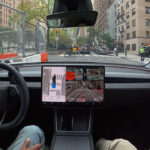Electric vehicle manufacturers are figuring out how to innovate and improve the nature of their vehicles. GM Ventures is a familiar face in the running, fighting with Ford for a spot behind Tesla and BYD. They have recently garnered interest after giving a $10 million investment to Forge Nano.
The materials science company is best known for its trademarked Atomic Armor Atomic Layer Deposition technology, which enhances the application of thin coatings to material surfaces. The investment, coupled with previous grants from investors like Volkswagen and LG Technology Ventures would help expand its battery material coating business.
Electric vehicles replace gas with rechargeable batteries, which are lauded for reducing emissions. However, charging them is challenging, as most public stations are inaccessible. Most consumers are left with having to drive far just to get to an outlet. Others may also invest in installing an EV charger in their home, which provides an extra layer of convenience.

That said, drivers still have to wait a while. It takes around 10 hours to charge an EV to drive about 50 miles with a level 1 110-volt charger. Some people upgrade their personal outlets to a level 2 240-volt one just to speed up the process.
Looking into quality batteries may also be more efficient, especially with Forge Nano’s offerings. Its Gen 1.1 Supercell battery is expected to fully charge in 10 minutes, ensuring drivers get back on the road as soon as possible.
The battery performance features a lithium-nickel-manganese-cobalt oxide, one of the more standard combinations for these power sources. However, what stands out the most is its silicon-oxide graphite composite anode. The active silicon increases the cathode stability no matter the voltage, resulting in fast charging.
GM and Forge Nano have developed a strategic partnership to utilize Atomic Armor equipment to coat cathode active materials for the EV manufacturer’s battery cells. This upgrade will improve performance capabilities, alluding to a longer life span for the power source.
Most electric vehicle batteries experience problems since the voltage triggers instability in the cathode capabilities. Because the cathode is the most expensive and delicate component of a power cell, customers have to tread a fine line between fast charging and energy levels. Otherwise, they would break the material and seek out newer replacements.
GM Ventures managing director Anirvan Coomer states that the brand aims to bring disruptive technology into the GM ecosystem to enhance products and processes for customers and the business. Forge Nano CEO Paul Lichty affirms their partnership and expresses their excitement about further work on battery material performance and durability.
In addition to optimizing the cathode, Forge Nano pledges to create prototype lithium-ion battery cells improved with Atomic Armor technology. Lithium iron phosphate has had a reputation in the EV industry, with Tesla even using it in standard-range automobiles.
For automakers, lithium iron phosphate is a more affordable but effective battery combination that’s relatively resistant to heat degradation. However, it is still vulnerable to high voltage. Incorporating resilient coating may make these power sources more viable for long-range models.
Tesla is still the leading EV manufacturer, but up-and-coming developments from GM and the rest of the industry will spur innovations. There have been reports that they want to introduce dry cathodes in its Cybertruck batteries by the middle of 2025 and four versions of the 4680 with the same component by 2026.
Some of the batteries are meant to power forthcoming robotaxi and other electric vehicles, which is nothing short of exciting. The automaking giant also recently unveiled the Cybercab at a Hollywood studio. Consumers can achieve a new self-driving experience around 2026.
The model is entirely autonomous, with zero steering wheels and pedals. The concept of fully autonomous driving has been around since the company’s launch, but it has always entailed the assistance of supervision. CEO Elon Musk desires to completely remove that aspect to allow riders to reach their destination without worry.
With promises of a better battery and reliable Full Self Driving software, Tesla (TSLA) is still in a strong position. Healthy competition from GM and Forge Nano’s partnership simply showcases how the EV industry’s future is brighter than ever.
Stay tuned for constant Tesla updates, follow us on:
Google News | Flipboard | X (Twitter) | WhatsApp Channel | RSS (Feedly).
Related News
- Tesla rolls out the 2025 Holiday Update (2025.44.25.1), new features and release notes
- Tesla FSD v14.2.1 conquers ‘The Snake’ highway in California (hairpin turns, ~30 curves, video)
- Tesla FSD v14.2.1 recognizes hand gestures and proceeds a red light and more (videos)
- License Tesla FSD or face the disruption — Musk once again warns legacy automakers
- Tesla offers 30-day FSD v14 trials to HW4 vehicles in North America, FSD v14.2 goes wide release
- Tesla update 2025.44 goes wide with Radio Traffic Announcements, dashcam tweaks, preps for Holiday Update (Release Notes)








